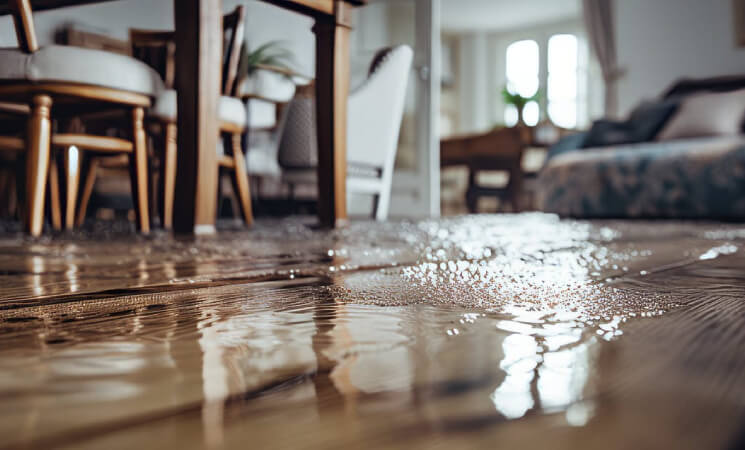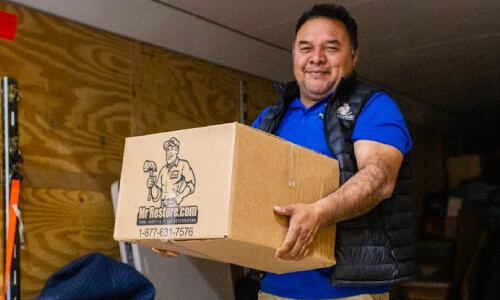| Sustainable Restoration Practices: Eco Friendly Approaches To Water, Fire, And Smoke Damage Recovery
Table of Contents
Tips On Eco Friendly Approaches To Water, Fire, And Smoke Damage Recover
Final Thought |
Sustainable Restoration Practices: Eco Friendly Approaches To Water, Fire, And Smoke Damage Recovery
Techniques for water, fire or smoke damage restoration play a critical role in ensuring the stability and safety of a structure following a natural disaster that compromises the integrity. Regardless of the damage, the recovery process requires distinct knowledge, a strong skill set, specialized tools and equipment, an efficient sustainable system, and careful planning.
Adequate water, fire, and smoke damage restoration is vital to not only fix what is visibly destroyed but also diagnose and address the root of the issue that has the potential to compromise the overall integrity. The objective is to return the structure back to its original physical and functional status with all safety codes and standards met.
A priority for many restoration teams is to focus their efforts with an eco-friendly approach to minimize the environmental impact. When faced with damage that needs professional recovery efforts, you’ll find these providers focus on sustainable techniques and the use of green products.
Tips On Eco Friendly Approaches To Water, Fire, And Smoke Damage Recover
The techniques water, fire, and damage restoration specialists use for recovery efforts play a critical part in returning a structure back to its original physical and functional standards while meeting all safety regulations. Most often the objective is to make a minimum impact on the environment using an eco-friendly approach.
These sustainable techniques and the use of green products alight with homeowners commitment to environmental protection. Here are the approaches used by water, fire and smoke damage restoration teams to minimize their environmental impact.
1. Diagnose the source of the issue
A priority before fixing the symptoms like with water damage is to address the underlying cause and resolve that issue. It could be a slow leak in a pipe or an appliance that’s in disrepair but the problem needs to be corrected to not only prevent recurring damage but to stop the water waste.
2. Use natural supplies
TIPS: What Is Green Cleaning: Everything You Need To Know
Cleaning is a vital part of the process in each damage scenario but it’s critical to avoid chemically-based products in favor of those that are natural or biodegradable. Harsh chemicals risk human and pet health plus threaten the environment. Eco-friendly alternatives are available with as effective results with no threat to the environment or anyone in the area.
3. Vacuuming techniques
When removing soot or excess water from an area, vacuuming is part of the process, either dry or wet vacuuming and construes as much more environmentally friendly than other methods especially with excessive water. Dry vacuuming can remove large volumes of water from material while the wet vac can be used for other surfaces like flooring.
On fabric surfaces, the upholstery attachment can remove soot from material when used gently and not pressed into the fabric.
4. Promote natural ventilation/circulation of air
Adequate ventilation and air circulation are crucial for smoke damage restoration and water damage restoration. Using natural air by opening doors and windows is encouraged to reduce the need for energy consumption by incorporating fans and other forms of drying or smoke removal machines.
It’s also essential to ensure that all property ventilation systems are functional to help with the processes.
5. Restore/salvage if possible
Many times items can be salvaged and restored in a damaged property instead of calling everything a total loss and deciding to replace it all. Particularly with documents, electronics, and some furnishings these can often be restored from a smoke damaged property and sometimes following water damage when using expert drying and cleaning techniques.
When choosing restoration over replacement, much waste is saved and you will contribute to a sustainable damage recovery process.
6. Consider responsible waste disposal
Despite your best efforts, some items won’t be recoverable and will need adequate disposal of items beyond repair. Different items will need to be separated into separate bins for those that are salvageable, any to be recycled, hazardous materials including contaminated items with each item disposed of based on local regulations.
When waste is disposed of properly, it reduces the environmental impact of water, fire, and smoke damage restoration techniques.
7. Plan for energy efficiency
With water damage restoration, drying the property quickly is essential to avoid mold growth and other repercussions. In order to do this in an eco-conscious manner, it’s important to use energy efficient equipment for the extensive processes. Looking for machines with high efficiency ratings like air movers, fans and dehumidifiers should be prioritized.
With the best ratings, less energy is consumed albeit effectively removing water and speeding up the drying process.
8. Be proactive
TIPS: Eco Friendly Building Materials To Help Save Energy And The Earth
When it’s time to repair or replace following damage to your property, it’s essential to be proactive in your approach with alternative natural and sustainable materials. These can include environmentally friendly options for floors like reclaimed wood or bamboo instead of using synthetic materials. Also opt for low VOC- volatile organic compounds paints/coatings to reduce harmful emissions.
When you contribute to the sustainable approach by being eco-conscious in your material choices, you promote a restoration project with minimal impact on the environment plus lead by example for a more environmentally friendly lifestyle.
Final Thought
In taking proactive measures you can contribute to a more sustainable approach to property protection from instances of water, fire, and smoke damages. That includes ensuring that your home has adequate ventilation systems installed in the kitchen and bathroom and that these are fully functional.
Many times people fail to use these vents when cooking or showering. It’s vital to incorporate these into regular daily use to decrease humidity and prevent condensation. Also make sure windows and doors, around pipes and other vulnerable areas are adequately sealed and insulated to reduce the possibility of water or smoke intrusion.
When damage does occur, find a recovery team that aligns with your eco-conscious approach to protecting the planet. Many use sustainable techniques and green products to minimize the environmental impact.






